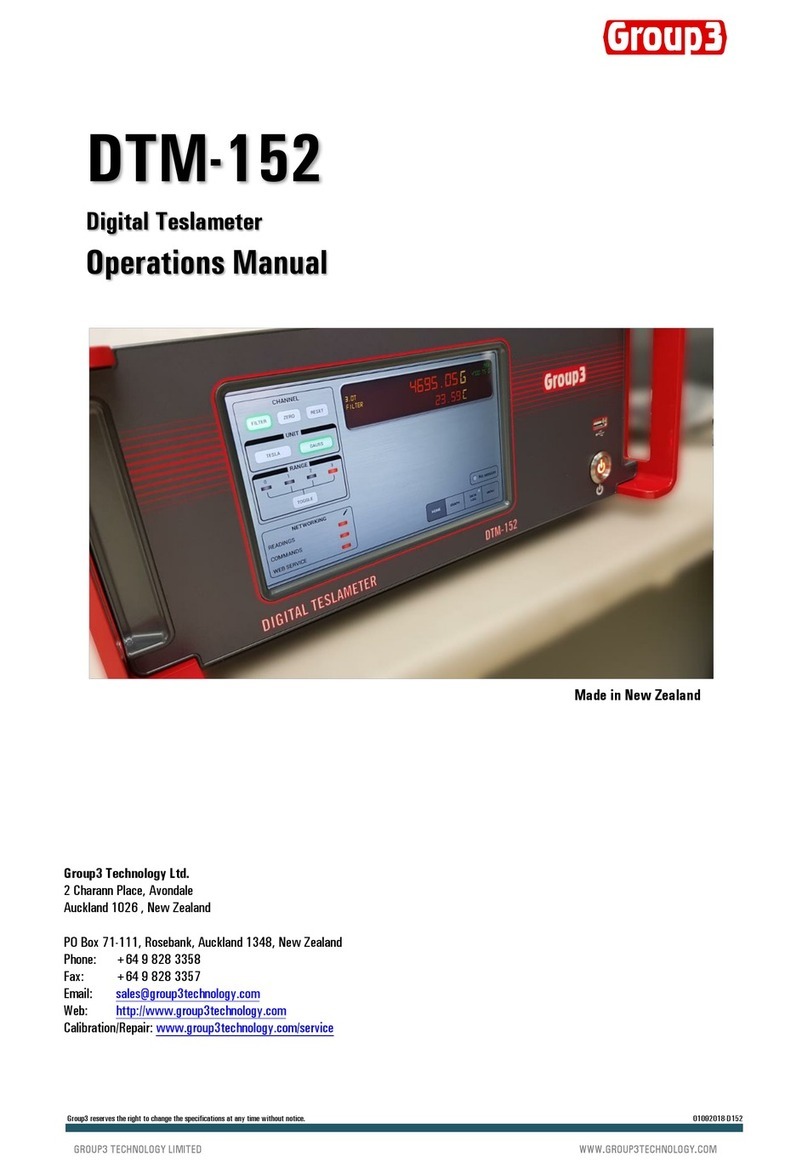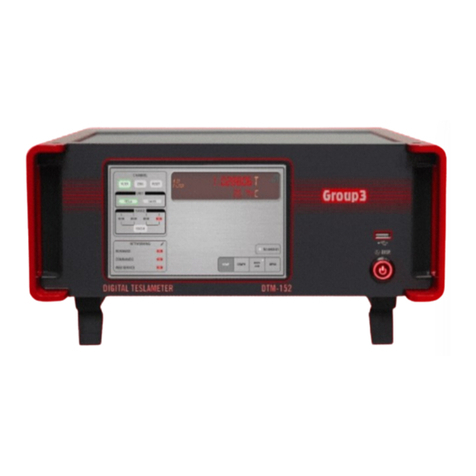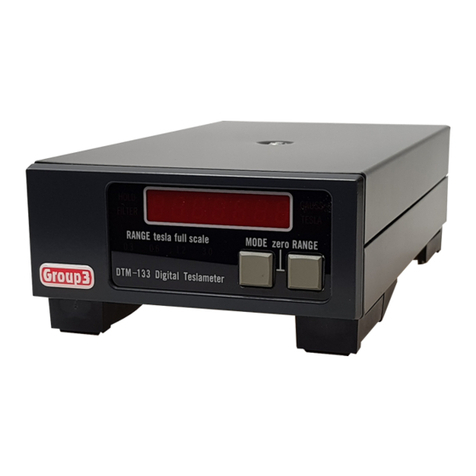Serial bit rate 16 rates, switch selected, 50, 110, 134.5, 150, 200, 300, 600,
900, 1050, 1200, 1800, 2000, 2400, 4800, 9600, 19200baud.
System orientation Group3 Communication Loop (G3CL) using serial ports,
simple loop for 31 devices, no multiplexer required;
GPIB with IEEE-488 option.
Fiber optic cable Hewlett-Packard HFBR-3500, 60 meters max.
Fiber optic repeater available for extended communications.
On-board switches serial baud bit rate selection, load defaults, device address,
filtering, string terminators, data format,
service request enable, EOI enable.
Analog outputs dc output - instantaneous field analog:
full-scale output: ±3V nominal
source impedance: 1000Ω
accuracy: ±10%
bandwidth: 3kHz at -3dB, rolloff 3-pole 60dB/decade
ac output - rectified analog of time-varying (ac) field:
frequency response: 8Hz to 3kHz at -3dB points
time-constant: 0.2 seconds
average responding, delivers rms value of sinusoidal field
full-scale output: 3V nominal
source impedance: 1000Ω
accuracy: ±12%
IEEE-488 functions SH1 source handshake capability
AH1 acceptor handshake capability
T5 talker (basic talker, serial poll, talk-only mode,
unaddressed to talk if addressed to listen)
TE0 no address extension talker capability
L4 listener (basic listener, unaddressed to listen if addressed to talk)
LE0 no address extension listener capability
SR1 service request capability
RL0 no remote local capability
PP1 parallel poll capability (configured by controller)
DC1 device clear capability
DT1 device trigger capability
C0 no controller capability
GPIB connector standard Amphenol 57-20240 with metric standoffs
DTM-151 (serial) User’s Manual 2-3
































